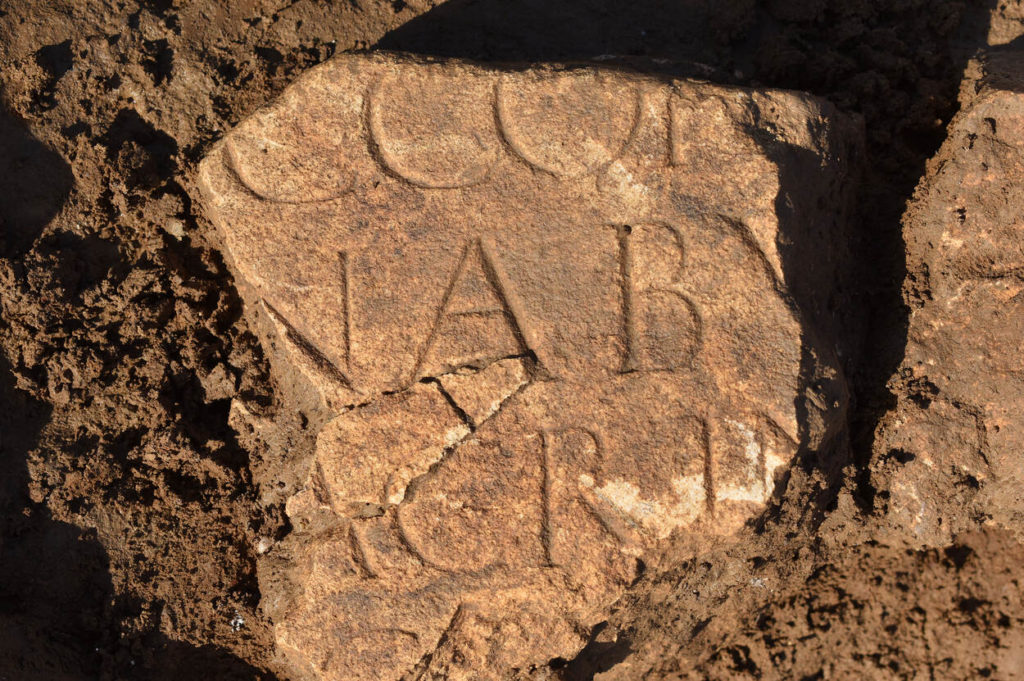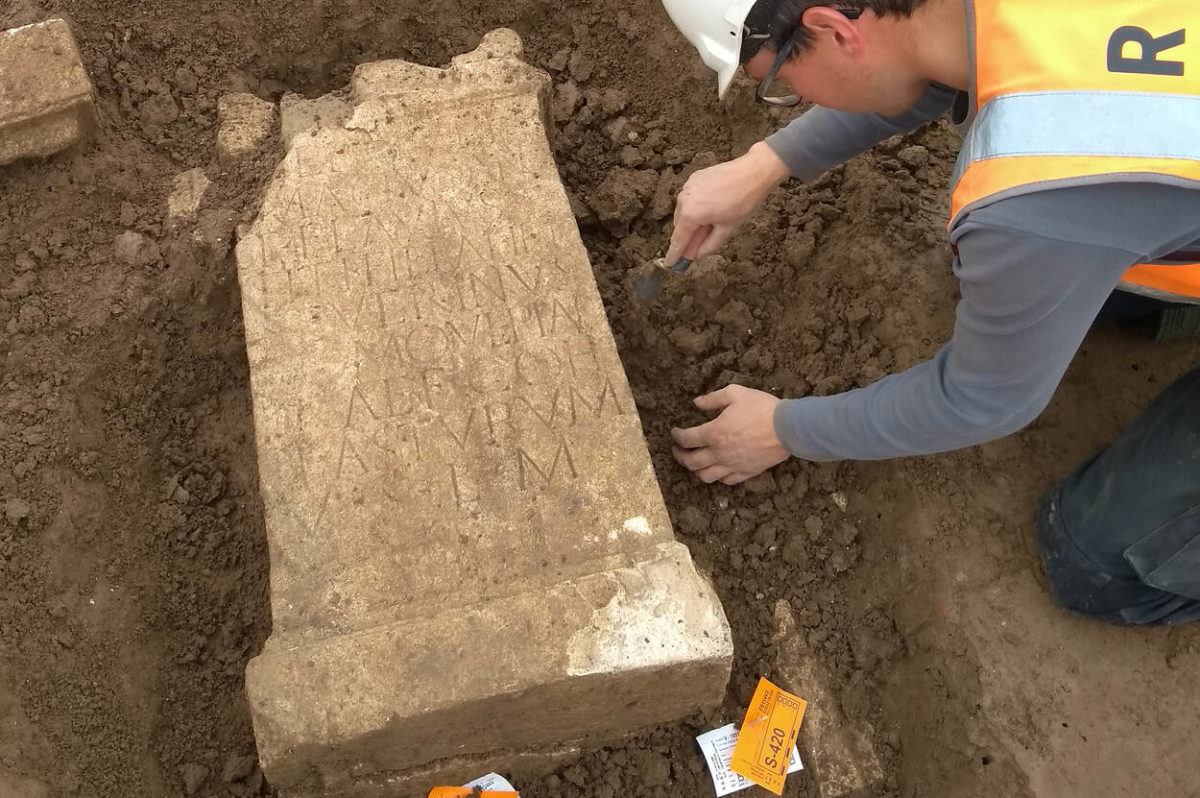Whether praying for love or thunder, ancient Roman soldiers believed they could move mighty gods to grant their wishes for the right offering.
Rich evidence of this was recently discovered in the Netherlands, where archaeologists have found a groundbreaking religious sanctuary that appears to have been used almost exclusively by Roman troops.
Located in today’s Gelderland region, near the border with Germany, the site was a bastion of worship near the Lower German Limes, which constituted the northern border of the Roman Empire. It was used from the first to fourth centuries A.D by Roman troops, who visited the site to make sacrifices, leave offerings and dedicate votive altars to the gods in exchange for favors.
“We have many troops mentioned in the votive altars, so it’s also possible that the sanctuary had some kind of regional function,” said Erik Norde, an archaeologist at the Dutch consulting firm Regionaal Archeologisch Archiverings Project (Regional Archaeological Archive Project) which is at work on excavating the site, according to Live Science. “We have found many, many traces of offerings made by the soldiers, and many remains of food offered to the gods.”
One of a Kind
The discovery is the first of its kind in the Netherlands.
“Never before has such a complete complex been found in the Netherlands with a temple building, votive stones and pits with the remains of sacrifices,” the Dutch Cultural Heritage Agency said in a statement. “In addition, the amount of limestone sculpture fragments is unprecedented.”
GET HISTORY’S GREATEST TALES—RIGHT IN YOUR INBOX
Subscribe to our HistoryNet Now! newsletter for the best of the past, delivered every Monday and Thursday.
A River Temple
On a majestic hilltop spot near the fork of the Rhine and Waal rivers, the sanctuary must have been an impressive sight in ancient times. A stone staircase led down from the sanctuary to the rushing waters. Sacrificial fires roared in hearth pits surrounding the site. The remains of a large well have also been discovered.

The sanctuary consisted of a Gallo-Roman temple with a tiled roof and at least one smaller temple nearby, in addition to altars to various gods and goddesses. Evidence of temple reliefs and painted plaster indicate that the temples were colorfully decorated. In addition, archaeologists have found countless military artifacts left behind by Roman soldiers in acts of devotion or perhaps as enticements to court favor from their gods. The tips of spears, lances, pieces of armor and horse harnesses have been discovered, along with coins, jewelry and the remains of sacrifices.
The site is filled with votive altars left behind by Roman officers to specific gods in thanksgiving for wishes granted. Each altar bears Latin inscriptions giving the Roman soldier’s name, rank, cohort and legion, and the name of the deity he intended to thank. Every inscription ends with the formal Latin phrase, “votum solvit libens merito,” meaning “he pays the vow, willingly and with good reason.” The Cultural Heritage Agency of the Netherlands noted that such altars were not only dedicated for winning battles, but also for surviving tours of duty in the dangerous northern regions.
Religious Fusion
Most of the altars were dedicated to three divine figures: Mercury, Jupiter-Serapis, and Hercules-Magusanus. The forms of worship offer interesting insights into the religious culture of the legions on the northern border.
The Roman god Mercury is known far and wide as the god of travelers, commerce and tricksters. He is easily identified by his winged helmet and winged sandals, and shares common traits with the Greek deity Hermes. Known as a mediator between the human and divine worlds, he became immensely popular in Roman Gaul, and his worship also spread to Germanic tribes, according to Roman historian Tacitus, who lived in the first and second centuries A.D.
The impish Mercury might seem an odd choice for Roman military men to be piling up altars to on the northern border. One might expect them to have taken more of a liking to a warlike god such as Mars for example. So why Mercury? Was it just about asking for wealth or safe travel?
In ancient mythology, Mercury is a much deeper and more complex character than many realize. He was known for his prankish but good-humored disposition. He was also revered for his athleticism, strength, and merciful attributes — specifically his acts of compassion towards fellow rogues like himself. He was a god that soldiers could easily have identified with.
Other deities at the site represent a unique type of fusion known as religious syncretism. The first, Hercules Magusanus, is a dualistic representation of Heracles, a Greek demigod renowned for his strength known to the Romans as Hercules, and a Germanic deity called Magusanus. Tacitus notes that Hercules was a particular favorite among Germanic tribes and was frequently invoked for courage and success in battle. It is possible that Hercules may have been identified over time with a local Germanic god. This combined deity is known to have been worshiped by Germanic soldiers serving in the Roman army, particularly in the Lower Rhine area.
The other deity, Jupiter-Serapis, is a combination of the Roman god Jupiter with a Hellenistic adaptation of Osiris promoted by the Ptolemaic rulers of Egypt. Jupiter was the supreme Roman god, seen as a fatherly figure and the author of Roman authority, while Serapis was associated with healing and immortality after death. With that in mind, it’s easy to understand why Roman officers would have vested interests in seeking favors from them.
Archaeological research at the site continues. In the meantime, rare artifacts recovered from the sanctuary are being displayed at the Museum Het Valkhof in Nijmegen.
historynet magazines
Our 9 best-selling history titles feature in-depth storytelling and iconic imagery to engage and inform on the people, the wars, and the events that shaped America and the world.






